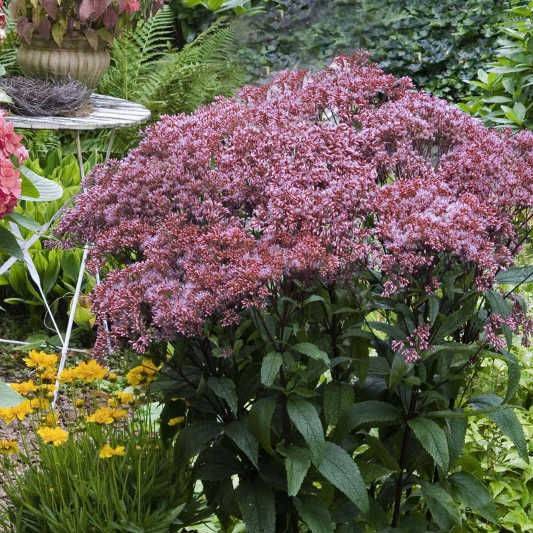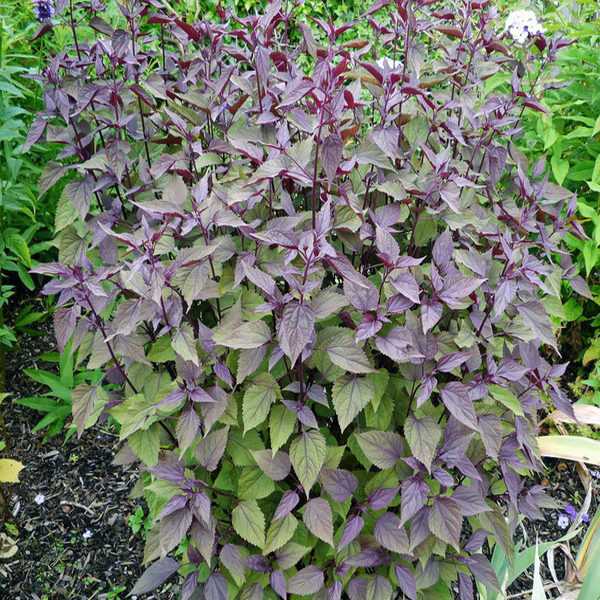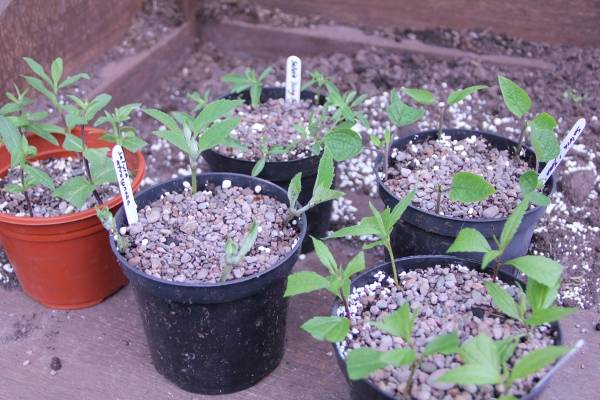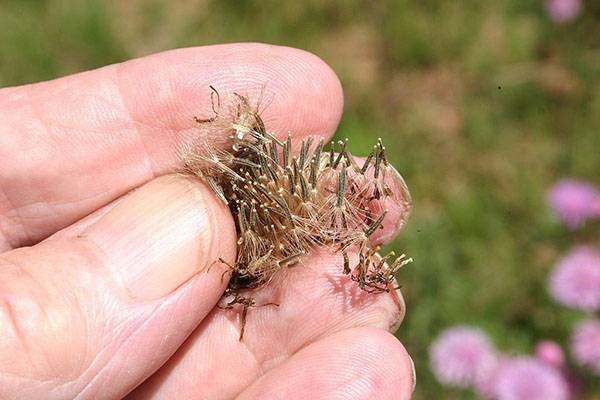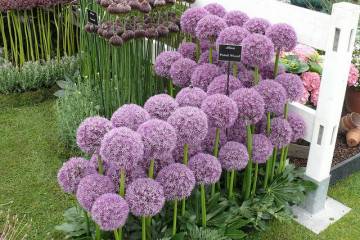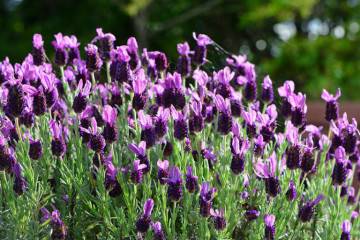Skeleton: planting and care in the open field
Content:
The perennial plants, used not only as decoration of the personal plot, but also as a medicine, include the steeple. On the territory of Russia, it has not yet become widespread, like other household flowers, only experienced gardeners undertake to grow it.
Bone sap - what is this garden flower
The plant is a representative of the Astrovich, in nature there are more than 600 varieties of it. Most of them grow in the territories of European and Asian countries, tropical Africa, some species in the United States. Only a few flower varieties are used as decorative species.
Origin story
A spectacular plant with strong stems, forms dense and tall clumps. In the wild, it is found in many regions of Russia, except for the northern regions.
The Russian-language name of the flower comes from "posconi" - the male hemp, which he resembles. The Latin name (Eupatorium) is associated with the king Mithridates Eupator. According to legend, an antidote was prepared from the plant, which saved his life.
Popular varieties
There are 4 popular varieties of the flower, often used to decorate home gardens.
Spotted
The country of origin of the species is North America. The plant prefers to grow in meadows, forests, thickets and coastal areas. Spotted stethosis is presented in several varieties:
- Album. Reaches 2 m in height, is distinguished by white inflorescences with a slight grayish tint;
- Atropurpereum. The bright red stems grow up to 2 m, the flowers have a pink-purple color. The variety is popular in horticulture;
- Big Amrellaz. Differs in grayish-pinkish flowers located on red shoots. The bush grows up to 1.8 m;
- Borterd Bride. Above the rest of the representatives by 40 cm. Snow-white flowers are evenly located on the stems;
- Baby Joe is a spreading bush up to 2 m in height with dark green foliage and different shades of flowers: from snow-white to blue;
- Gateway. The size does not exceed 1.5 m. The dome-shaped inflorescences have a pink-lilac color, the stems are red;
- Karin. Grows up to 2 m. Flowers are light lavender;
- Pearl Bash does not outgrow 1.5 m. The variety has smaller flowers than Gatway, with a similar mauve color;
- Phantom. A little more than 1 m in height. Stems are dark in color, flowers are gray-lilac.
Purple
Distributed in North American lands, reaches a height of 1.5 m. The stems have a greenish-bluish color, small villi can be seen on the foliage. Large inflorescences are formed from small baskets. The colors are varied: from pinkish to lilac-purple.
The Little Red variety was especially popular. The height of the bushes does not exceed 1 m, the inflorescences have a wine-pink color. Little Joe, the second most common variety, has smoky pink flowers.
Hemp
Distributed in European countries, grows next to streams, rivers, in swampy areas. Gardeners in landscape design use several varieties:
- Album. Determined by white flowers;
- Variegatum is a low-growing variety (up to 0.75 m) with rich pink flowers, a white line at the edge of the foliage;
- Plenum. It is characterized by a height of 1.6 m, a long flowering period, and the formation of terry baskets.
The average height of the bush ranges from 0.2 to 1 m. Foliage with small denticles at the edge, pinkish color at the inflorescences.
Wrinkly
Bushes with oval leaves, opposite arrangement, carved edge along the edge. Varieties of gardeners enjoy a special arrangement:
- Brainlaub is up to 1.5 m in size. Young leaves have a brown color;
- Chocolate. Differs in good resistance to frost, white flowers, bronze-brown glossy foliage with a slight purple tint.
Bone sap: how to propagate
Gardeners offer several options to help increase the number of shrubs in the front of the house. These include grafting, dividing an adult plant and planting seeds.
Cuttings
The works are carried out in early spring. Cuttings of overwintered steak begins with the careful separation of young stems along with the root system. They are rooted in greenhouses or hotbeds and watered regularly. By the end of the summer season, full-fledged roots will form on them, the plants can be planted in a new, previously prepared place.
Dividing the bush
If the propagation by cuttings of the steep did not succeed, in the last decade of summer, the division of old bushes is carried out. An adult plant is divided into 2-3 parts, planted in prepared holes, watered abundantly.
Bone sap: seed propagation
Seed reproduction is carried out according to the following scheme:
- Planting of the material begins in early spring.
- Seeds are spread over the surface of the soil and lightly sprinkled.
- Watered with a pinkish solution of potassium permanganate.
- The boxes are covered with glass or plastic wrap.
- Entries are expected in 14-21 days.
- After the sprouts appear, the glass is removed.
- When forming 4 leaves, they are transplanted into other containers.
Skeleton: planting and care in the open field
Before starting work, a suitable place is selected, the land is prepared. The bushes are not capricious species and do not require special supervision. It is enough to moisten the soil and feed the plants in a timely manner.
Planting capacity and soil
For planting, it is better to use small plastic containers with transparent lids. The soil is taken ready-made, specially created for flowering plants, enriched with minerals and trace elements necessary for the development of seedlings.
Seed preparation and sowing
Seed material is pre-stratified:
- Spread on moistened cotton pads.
- Placed in a plastic bag.
- They are sent to the refrigerator for 30 days.
The seeds are laid out on the surface of the soil in pots, lightly sprinkled with earth, watered with water at room temperature, covered with foil to create a greenhouse effect. The containers exposed to the sunny side are opened daily, the accumulated condensate is removed.
The first shoots will appear in 2-3 weeks.
Caring for a young stele consists of regular watering. After the appearance of the first 3 leaves, the young are seated in separate pots.
Site selection and soil preparation
The plant prefers open sun areas. The land must be nutritious and well-drained. In sandy soils, compost is required, in other cases - bone meal.
How to plant grown bush bushes correctly:
- The site is pre-dug up.
- Remove stones.
- Moisten the earth.
- Dig small holes. The distance between them should be from 60 to 80 cm, between the rows - from 35 to 40 cm.
Landing in open ground
A mixture of fertilizers is applied to the planting pits:
- 5 to 10% bone meal;
- up to 30% ash;
- up to 65% humus.
Following actions:
- One plant is planted in each well.
- Its roots are gently straightened.
- Sprinkle abundantly with water.
- Sprinkle with earth. The root collar should be completely immersed in it.
After the end of planting, re-watering is carried out. It is not difficult to take care of the plants: you need to timely moisten the soil, remove weeds, and apply fertilizers during the flowering period.
Bonewood: growing in a seedless way
Several options are used:
- dividing the bush;
- reproduction by kidneys;
- grafting.
After planting, caring for the bump consists in abundant and regular moisture of the soil. Water stagnation should not be allowed, as excessive moisture provokes root rot and the death of bushes. After each watering, the soil is carefully loosened, weeds are removed. Fertilizers are applied 3 times per season, organic and mineral dressings are used. They are poured under the root, avoiding falling on the stems and flowers.
Sapwood is a light-loving and moisture-loving plant that takes root well in almost any summer cottage. A poisonous flower is not afraid of attacks of diseases and pests; when planted in the shade, it blooms poorly. An unpretentious plant does not require special care, it is easy to propagate even for inexperienced gardeners.
